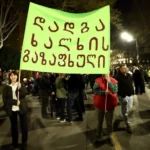Ukraine is turning towards an unlikely solution to combat a global shortage of gunpowder – cotton farming. In Odesa Oblast, where Western allies are struggling to meet their artillery requirements, experimental fields aim to produce nitrocellulose – a key component of gunpowder. Russia, on the other hand, does not face such ammunition shortages.
Ukraine is facing a critical shortage of ammunition as it fights Russian aggression. The demand for artillery shells far exceeds the supply. Gunpowder shortages, a critical component, are causing production to be hampered. This is a global problem that affects even NATO allies. Modern artillery relies on smokeless powder – nitrocellulose, derived primarily from cotton fibers.
China, the primary source of this cotton is accused of aiding Russia in its war effort, despite its claims of neutrality. US intelligence indicates that China may be supplying Russia with nitrocellulose. This has raised alarms among European defence companies. Armin Papperger of Rheinmetall, Germany‘s largest arms manufacturer, revealed that China supplies over 70% of Europe’s gunpowder. Micael Johansson is the CEO of Saab and warns that Europe’s dependence on Chinese-made nitrocellulose could be a threat to continental security.
Ukrainian firms are rushing to increase domestic ammunition production in order to counter Russia’s firepower advantages. The gap between Russian and Ukrainian forces is closing. In September, Oleksandr Syrskyi, the commander-in-chief of the Ukrainian Armed Forces, reported that Ukraine has improved the ammunition disparity, from last winter’s ratio of 1:8 to about 1:2. However, Russia still retains an edge.
Ukraine is reviving an old Soviet practice by experimenting with domestic cotton cultivation to produce nitrocellulose. Ukraine’s progress toward self-sufficiency is uncertain, but vital, with a monthly requirement of 200,000 shells.
Ukrainian news outlet Ekonomichna Pravda has investigated this effort, highlighting challenges. We summarized the findings.
How cotton becomes gunpowder
The key to ammunition production success is not building more shell plants, but securing an adequate supply of rare components. Gunpowder, for example, is essential to the production of ammunition.
Nitrocellulose is a key ingredient in gunpowder and can be extracted from a variety of plant-based materials including industrial hemp, cotton, wood, or wood pulp.
Cotton is a lightweight material that is often used to make powder for long-range artillery. Cotton fiber is 95% cellulose, and only 5% fats or other substances.
The production of smokeless powder involves a number of steps:
* Cotton is purified to isolate cellulose
* The extracted cellulose undergoes a chemical process involving sulfuric acid and nitric acid, which forms nitrocellulose
* This nitrocellulose is further processed to create gunpowder grains
* These granules will be dried to make propellant charges for ammunition.
Odesa, southern Ukraine: Strategic cotton test fields
Ukrainian authorities are employing multiple strategies to secure supplies of gunpowder, including collaborating with European countries and seeking assistance from allies. They also develop domestic capabilities. One of the key initiatives in this effort is to revive cotton cultivation. Cotton is crucial for the production of nitrocellulose, which is a primary component in gunpowder.
In May 2024 the Ukrainian government passed legislation that would streamline imports of cotton varieties and launched a growing project in southern Ukraine. The move was made despite the fact that Ukraine’s climate is not ideal for cotton. Cotton thrives in warmer climates like those of Central Asia. Cotton was once grown in Crimea, Kherson Oblast, and other areas of Ukraine during Soviet times. However, large-scale production stopped decades ago. After the 2014 annexation and occupation of Kherson Oblast, these regions are now under Russian rule.
Stepan Cherniavskyy is the Chair of the Ukrainian Parliament’s Agrarian Policy Committee. He estimates that Ukraine’s defense sector needs 10,000 tons of cotton-cellulose, which would require approximately 74,000 acres (30 hectares). This area could be reduced by half with irrigation. Cotton can also be grown on non irrigated land.
Read More @ euromaidanpress.com













